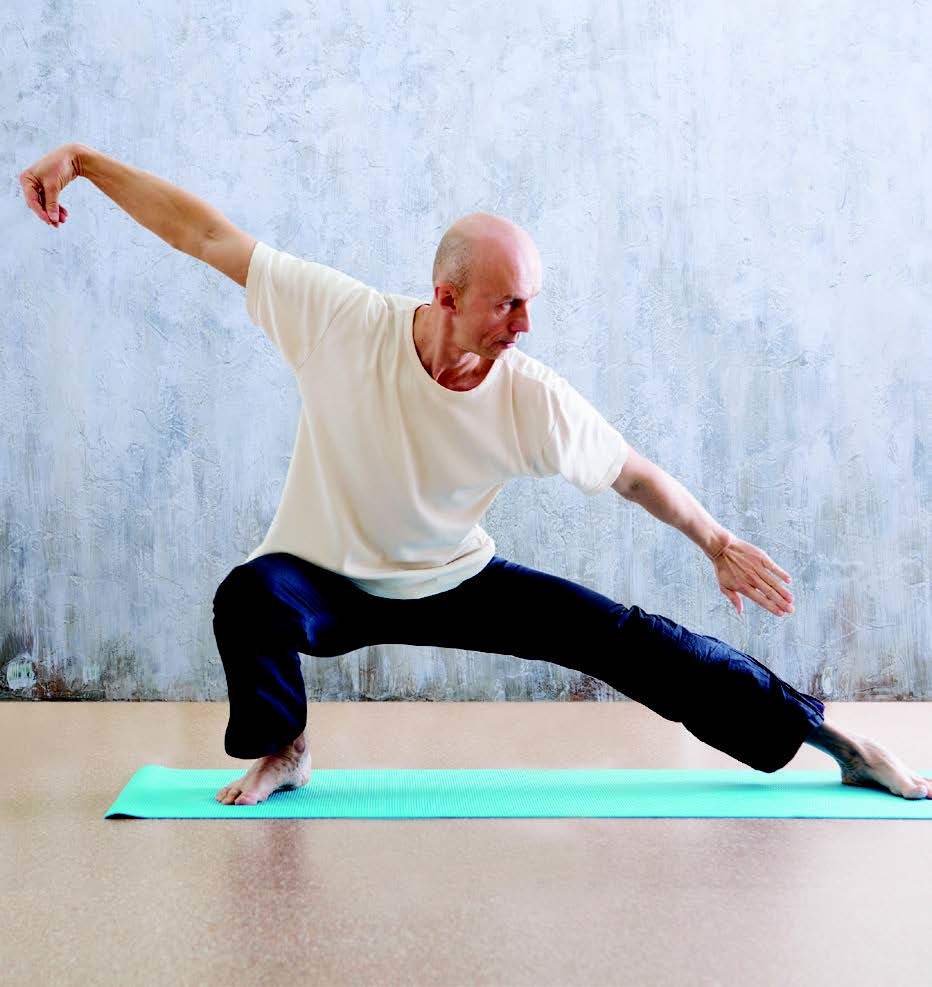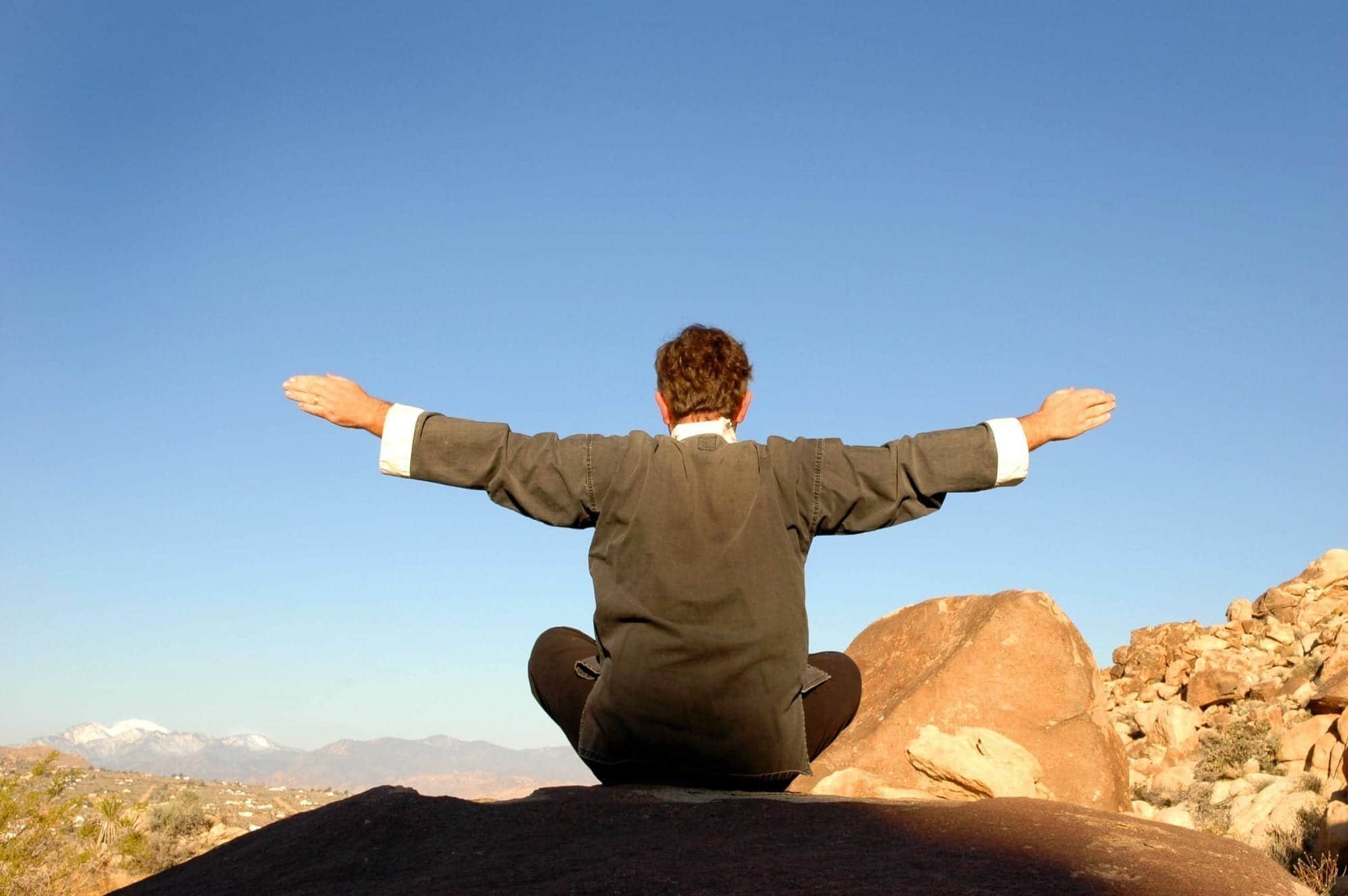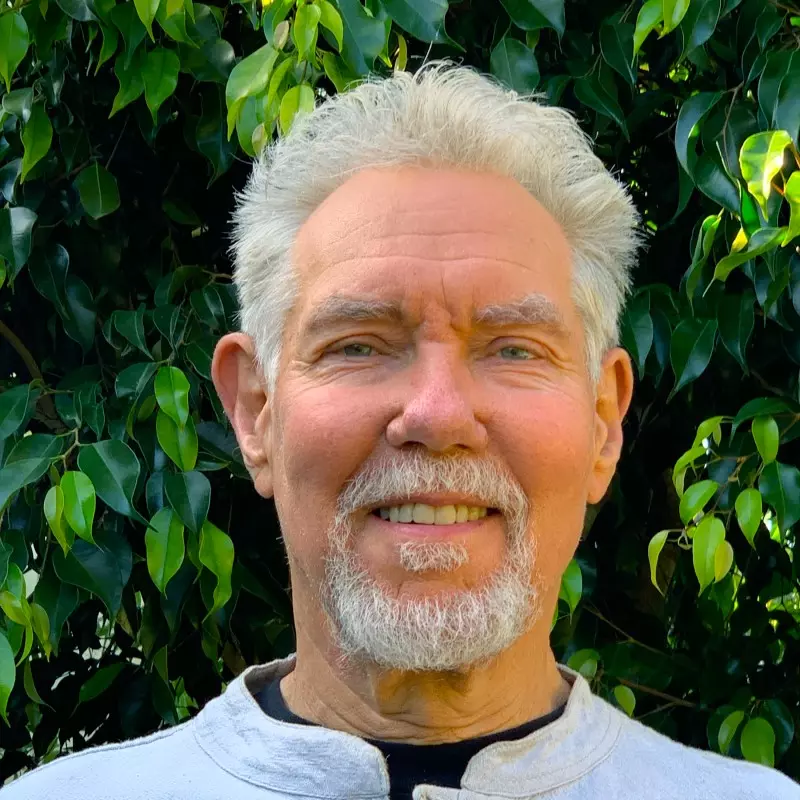By Roger Jahnke, OMD
“The most profound medicine is produced naturally—in the human body—for free!” This phrase, from The Healer Within, is the innovative foundation of a profound personalized peak performance and personal vitality system.
There are many ways to turn on (activate, create, maximize) this miraculous internal medicine. By enhancing wellbeing and function capacity, disease is neutralized (healed). Even better, disease is prevented, and even better again, wellness is sustained, and peak states of performance and flow are initiated and sustained. These methods were fully described in the ancient, totally personalized, yet very practical and inexpensive views of Chinese philosophy, cosmology, Chinese medicine, as well as qigong, taiji, and kung fu.
The Yellow Emperor and his master physicians compiled an entire book on mobilizing the “healer within”: The Classic of Inner Medicine, Huang Ti Nei Jing (1).
The Healer Within Paradigm and Functional Coherence
The Healer Within paradigm is founded on functional coherence of the Three Treasures—Body-Mind-Spirit (also sustained self-awareness, or interoception, of these three aspects of self: posture, breath and mind). This dynamic, a state of balance and harmony at every level of being, is discussed in terms of qi in the Chinese worldview, and in the West more recently as “flow”.
Wu Wei and Flow in Ancient and Contemporary Views
The concept of the flow state in current culture, as described by many contemporary “hackers” of peak performance, and originally by psychologist Mihály Csíkszentmihályi, describes “flow” as a state of complete immersion in an activity. A beautiful equivalent in the Chinese paradigm is wu wei, “effortless engagement”, as noted by the philosopher Lao Zi (or Lao Tzu) 2500 years ago.
In the ancient Chinese version, wu wei creates an internal state of no restriction to the highest level of function of the qi, which infuses all of the aspects of the self: body, mind, and spirit. In the contemporary view, the flow state occurs when an individual is fully engaged with an absence of distress or restriction which leads to unimpeded psycho-physiological function.
There are many mechanisms triggered by these states (they are actually not states, rather they are very dynamic): immune function enhancement, shifts in neurotransmitter production, enhanced vagal tone, regenerative influence on the DNA (telomeres and sustained cellular replication). These all suggest that wu wei and flow are tapping into a kind of Fountain of Youth, deferring aging and sickness.
There are many methods for activating these dynamics. All are inherent to what has come to be called a holistic, integrative, whole-person health system. Some of the ancient methods—acupuncture and massage—require treatment from a licensed medical provider, for which there is a cost. Some of them require the ingestion of nourishing and functional activating substances (herbal medicine), which also has a cost.
Some of them, however, such as self-cultivation through qigong, taiji, and meditation, can be utilized by individuals at home or in public venues (parks, churches, schools, hospitals), for free. Yoga, fasting, nootropics, forest bathing, cold showers, novel (atypical) activities and even microdosing psychedelic plant medicines also have the same influences.
By virtue of this inner capacity for integrating the Body-Mind-Spirit (Coherence of the Three Treasures), some practices such as yoga integrate clinical treatment with proactive health and resiliency maximization, a form of wellness-based medicine where the primary physician is within oneself. These systems maximize inherent capacity: homeostatic capacity, mitochondrial fitness, trans-normal abilities, peak performance, and flow.
If you think a career in holistic medicine is something you would like to pursue, contact us and speak to an admissions representative to get started on your new journey!
The Basis of Healing in Ancient Asian Systems
The core of healing and prevention in the ancient Asian systems is the activation of naturally occurring inner healing resources through personal behaviors through a system called yang sheng, which is equivalent to today’s health hacking and self-directed wellness systems—nutrients, rest, and hydration, combined with qigong and taiji (and kung fu and yoga). Based on the knowledge, wisdom, and application of Chinese wellness-based practices, individuals, families, agencies, institutions, communities, states, and even nations can easily prevent diseases that are widely known to be preventable and eliminate unnecessary medical costs. This is essentially activating flow!
The Basis: Qigong and Taiji
It is widely known that many horrific diseases are preventable.(2, 3) The American wellness and health hacking revolution is now wide awake. Recently, a former US President put the words “prevention” and “personal responsibility” into the same phrase and set 8 principles of healthcare, including “invest in prevention and wellness”.(4) When our society looks for what to actually do about this, one of the cheapest “programs” (due to group-based implementation) is Asian self-care—yang sheng with qigong and taiji: methods for evoking the flow experience.
Buried in the Affordable Care Act, which is controversial but still in force, there are numerous clauses that incentivize health promotion and disease prevention with financial benefits and even penalties for the neglect of health promotion. This suggests that the application of qigong and taiji and all of the Asian wellness-oriented (yang sheng) practices could eventually gain the support of policy and law in coming years. However, while politicians argue and obstruct, favoring big pharma, citizens are not waiting. We are hacking the brain, the vagal system, the telomeres, the mitochondria—and the qi—now.
A Secret Worthy of Being Common Knowledge
The same mechanism that mobilizes healing resources through Chinese clinical therapeutics can be activated by average citizens at home for no cost. Individuals can heal themselves as well as collaborate with their integrative medical team. The citizens of any nation can solve health crises due to chronic degenerative disease through the application of personal practice of qigong and taiji, as well as yoga and meditation. We know that people who live engaged holistic lives can experience reduced risk of hospitalization and death.
It is possible for people to curtail the waste of billions of dollars annually. It is a potential bailout—and a kind of patriotism.
My Own Revelation
The words of Lao Zi launched me personally into Asian medicine in 1967, in Cincinnati, Ohio, in Dao De Jing # 10:
“Can you cultivate your essential energy and sustain the suppleness of a newborn with no cares?”
To me, this is the ultimate health/medical insight—a direct reference to the natural, inherent presence of wu wei within each person: a natural orientation to flow. Is it possible that doctors of both conventional and traditional medicine should have more questions for their clients and fewer answers? In my career, this question, and others posed by Lao Zi, form the theoretical and economic basis for the emerging wellness-based system of healthcare and medicine in the 21st century.
Another question that comes from the Dao De Jing, #52:
“Do you practice eternity?”
Questions like this are not typically a part of medical inquiry, but they point to aspects of personal awareness that can lead to healing insight offered by neither surgery nor pharmaceutical products. Eternity isn’t trying; it is fully engaged in unfolding. Eternity suggests that we emulate wu wei and flow.
The Healer Within and the Evolution of Medicine
Those trained in Chinese medicine know, either overtly or covertly, that the medicine is not in the acupuncture needle; it is in the patient. The job of the provider (doctor, practitioner) is not to cure the disease, but to maximize the natural healing capacity of the human system.
In a time when we have evidence that many diseases are preventable, it is fair to say that a key solution to problems in healthcare and medicine is to focus on the prevention of preventable disease. The underlying wellness basis which is inherent to Chinese medicine is rapidly becoming a prominent new feature of healthcare and medicine in many innovative initiatives, policies, and programs.
Integrating Body-Mind-Spirit in Modern Healthcare
Certainly, the breakthroughs in surgery, pharmacy and diagnostics of Western conventional medicine have relevance. However, it is the “discovery” (probably better referred to as the recovery) of behavioral prevention, and the healer within, that will leave a prominent mark in the medical history in these early years of the 21st century. Awareness of the inner medicine, the inherent functional elixir, is rapidly infusing into popular culture and ways of being that include flow and wu wei are foundational. You cannot buy flow. You cannot buy wu wei. You can only create them—for no cost.
Functional Maximization—Foster the Righteous
The profound holistic power of Asian medicine is that it is inherently rooted in two wellness principles that conventional Western medicine have neglected until very recently. The first is the “holistic ideal”—Body-Mind-Spirit. These Three Treasures are always linked in Chinese medicine, but they are only recently becoming linked in the emerging new conventions of Western healthcare.
The second is the “two medicines in one” principle of Chinese medicine. Shared with Western medicine is the “Attack the Disease” model. This is to kill or modify the pathogen or pathogenic factors. Both Western and Chinese medicine have excellent tools for “Attacking the Disease” strategies. Until very recently, the wellness basis, which complements “Attack the Disease”, was unique to Chinese medicine and other holistic forms of medicine: Ayurvedic,native, shamanic, it is known by many names. In the literature of Chinese medicine: the “Foster the Righteous” model. More contemporary: “Maximize Functional Capacity”.
This is the very essence of wellness-based medicine. Rather than attacking what is wrong, the “Foster the Righteous” model maximizes what is right through the tools of Chinese medicine—acupuncture, herbs, massage, and personal wellbeing cultivation: qigong. “Foster the Righteous” refines, awakens, and activates the “healer within”—“the inner elixir”. This is the most profound medicine, naturally produced in the body.
While clinically-based prevention has long been present in Western healthcare, only recently has behavior-based prevention been granted any relevance. As Western medicine molds itself to the wellness and prevention framework, what are the primary innovations? Physical activity, anti-inflammatory nutrition, and meditation. What is the key to behavioral prevention? These have been the central points of Chinese wellness—yang sheng—for millennia.
Conventional medical facilities are currently taking on numerous best practices of wellness and functional enhancement from the Asian healthcare model.
Flow: Mind-Body Energetics, Wu Wei and Mindfulness
Among the most eloquent forms of behaviorally based wellness practice are the Chinese mind-body energetics practices. Qigong and taiji are the cousins of yoga from India. They are all mindfulness methods, founded upon the actualization of flow.
While questions about qi (energy, function) and the nature of mind (Xin-heart-mind) are the most interesting aspects of qi cultivation, it is the economics of personal wellness that is extremely compelling to our society right now. Qigong and taiji (and other mind-body practices) are the underlying solution to many of the medical cost and quality challenges of contemporary time. They are accessible, easy to learn (simple forms), easy to get people enthusiastic about, easy to disseminate, and inexpensive due to the group-based learning context. It is really very simple: people who prevent disease and activate the inner medicine through self-initiated health enhancement practice need less clinical medicine—whether it is conventional or holistic.
The science of estimating the magnitude of the savings is progressing. For now, we can say that when people prevent disease, society can save 70-90% of the $3.5 trillion annual cost of the medical system. That’s $3 trillion. That is a huge financial bailout. You can probably guess why no one in policy or finance ever references this.
Demonstrating the Impact of Qigong and Taiji in Modern Settings
Chinese wellness practices are most widely referenced as mind-body practices, moving meditation, and Chinese self-care. Qigong and taiji, in a multitude of forms, are now being implemented in schools, universities, faith institutions, social service agencies, hospitals, clinics, spas, retreat centers, community centers—even the military. In a review of over 70 randomized clinical trials (RCT) (4), the mind-body wellness practices of Chinese medicine were found to be safe and effective in treating and preventing disease. Inspired by this, the National Institutes of Health instituted an annual event called NIH Mind-Body Week for a few years, with several keynotes on qigong and taiji (5).
In collaboration with the University of Illinois, the Institute of Integral Qigong and Tai Chi (IIQTC) convened the National Consensus Meeting on qigong and taiji.(6) One of many new breakthroughs is the research on gene expression and the reduction of cell death (longevity enhancement) with qigong, taiji and other forms of mind-body practice. A program developed especially for bringing taiji and qigong wellness programs to schools, social service agencies, the military, and veterans, amongst others, has trained 300 “practice leaders” in collaboration with the National Wellness Institute at the University of Wisconsin, the Veterans Administration, several faith institutions, Asian Pacific Health in California, the Western Nebraska Regional Health Authority, and the Southern Arkansas Council on Aging. As a result, taiji and qigong are rapidly being embraced by policy makers, program coordinators, researchers and funders.
Personal Empowerment Through Ancient Practices
Accept your sovereignty, your autonomy, your inherent power, your right to self-determination. Stop listening to what others think you should do and determine what you are called to. Yes, some focus is required. The inner medicine, the naturally occurring inner healing resources, the healer within, the inner elixir can not be purchased for any amount of money. We can only create them—for free—through simple methods. A beautiful starting place is to hack into and maximize the functional capacity enhancement that results from cultivating flow or wu wei. The “drugs” that are produced within your own being through accessible yang sheng methods are astoundingly powerful. There are no side effects. No prescription is required!
References
- Ni, MS. Huang Ti Nei Jing: The Yellow Emperor’s Classic of Internal Medicine, Shambala, Boston, 1995.
- McGinnis JM, Foege WH. Actual causes of death in the United States. JAMA. 1993 Nov 10;270(18):2207-12.
- Fries JF, Koop CE, Sokolov J, Beadle CE, Wright D. Beyond health promotion: reducing need and demand for medical care. Health Affairs. 1998 Mar-Apr;17(2):70-84.
- Obama B. 8 Principles of Healthcare. http://www.whitehouse.gov/issues/health_care/
- Jahnke R, Larkey L. A Comprehensive Review of the Health Benefits of qigong and taiji. Accepted for publication by the American Journal of Health Promotion with final revisions. Preliminary review at http://www.instituteofintegralqigongandtaichi.org/qigong_tai_chi_research/
- September 8—10, 2009, http://www.IIQTC.org/calendar/NIH_mind-body_week.htm , Plenary with Dr Roger Jahnke
- 21st Century Breakthrough — Researching the Benefits of Mind-Body Practice by Investigating Genetic Expression http://www.instituteofintegralqigongandtaichi.org/research/21stbreakthrough.htm
Featured Posts:


